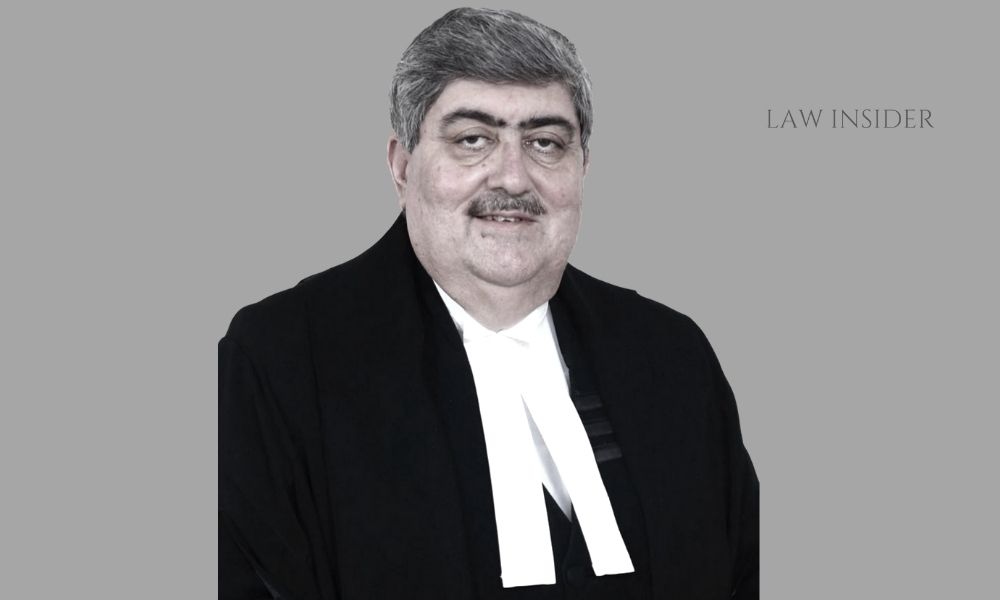Judge of Supreme Court of India.
NAME – Sanjay Kishan Kaul
PROFESSION– Judge
BORN – 26/12/1958
PLACE OF BIRTH – New Delhi, Delhi
FATHER’S NAME – N/A
MOTHER’S NAME – N/A
SPOUSE – N/A
SIBLINGS – 1
CHILDREN – N/A
EDUCATION –Graduation in Economics (Hons) from St Stephens College, Delhi University LLB from Campus Law Centre, Delhi University
AWARDS – N/A
SPECIALISATION-N/A
COMMITTEE/ PANEL HEADED-N/A
BACKGROUND– Sanjay Kishan Kaul is a Judge of Supreme Court of India. He is former Chief Justice of Madras High Court and Punjab and Haryana High Court and former Judge of Delhi High Court. He has also served as Acting Chief Justice of Delhi High Court.
A native of Srinagar, Justice Sanjay Kishan Kaul hails from the family of the Dattatreya Kauls of Srinagar. His great-great-grandfather, Raja Suraj Kishan Kaul, was the Revenue minister in the Regency council of the princely state of Jammu and Kashmir. His great-grandfather, Sir Daya Kishan Kaul served as the finance minister of Jammu & Kashmir state. His grandfather, Raja Upinder Kishen Kaul, had a distinguished career in public service.
He enrolled as an Advocate with Bar Council of Delhi on July 15, 1982 and practiced law at the High Court of Delhi and the Supreme Court of India. He was Advocate-on-Record of the Supreme Court of India from 1987 to 1999 and was designated as a Senior Advocate in December, 1999.
Justice S.K. Kaul was elevated as Additional Judge of the High Court of Delhi on May 03, 2001 and was appointed as a permanent Judge on May 02, 2003. He was appointed as the Chief Justice of Punjab and Haryana High Court on June 01, 2013 before being sworn-in as Chief Justice of the Madras High Court on July 26, 2014. He was appointed as a Judge of the Supreme Court of India on February 02, 2017.
During his 19-year career, he handled mainly commercial, civil & writ matters in Delhi high court & Supreme court of India.
CAREER TIMELINE –
1982- Enrolled as an Advocate with Bar Council of Delhi
1987- Appointed as the Advocate-on-Record of the Supreme Court of India
1999- Designated as a Senior Advocate of the Supreme Court of India
2001- Elevated as Additional Judge of the High Court of Delhi
2003- Appointed as permanent Judge of the High Court of Delhi
2013- Appointed as the Chief Justice of Punjab and Haryana High Court
2014- Sworn-in as Chief Justice of the Madras High Court
2017- Appointed as a Judge of the Supreme Court of India
LANDMARK JUDGEMENTS-
K.S. Puttaswamy v. Union of India-
S.K. Kaul was part of the 9 Judge Bench which unanimously held that, Right to Privacy is a basic fundamental right. The Bench, which also comprised of J.S. Khehar, J Chelameswar, S.A. Bobde, R.K. Agrawal, R.F. Nariman, A.M. Sapre, and S.A. Nazeer, observed that right to privacy is an intrinsic part of right to life and liberty under Article 21 and freedoms guaranteed under Part III of Constitution of India. The Court ruled that the Right to Privacy was a fundamental right in India, constitutionally protected under Articles 14, 19 and 21 of the Indian Constitution. The judgement was interpreted as paving the way for the eventual decriminalization of homosexuality in India.
Babita Puniya vs The Secretary & Anr.-
A Division bench headed by Sanjay Kishan Kaul regarding recognizing the rights of women to get equal status with their male counterparts in Army and Air force, held that the Short Service Commissioned women officers of the Air Force who had opted for PC and were not granted PC but was granted extension of SSCs and Short Service Commissioned women officers of the Army are entitled to PC at par with male Short Service Commissioned officers with all consequential benefits.
Maqbool Fida Husain v. Rajkumar Pandey-
Sanjay Kishan Kaul, as Delhi HC Judge, dismissed the charges levied against M F Hussain for his painting of a lady later termed as ‘Bharat Mata’, accusing him of obscenity. Upholding free speech and expression, Kaul expressed agreement with Husain’s contention that there was no deliberate intention on his part to hurt anybody’s religious feeling as the figure actually represented an “anthropomorphic depiction of a nation” in the form of a distressed woman. The Court emphasized on liberal tolerance.
CONTROVERSIES –N/A
REMARKABLE ACHIEVEMENTS– N/A

